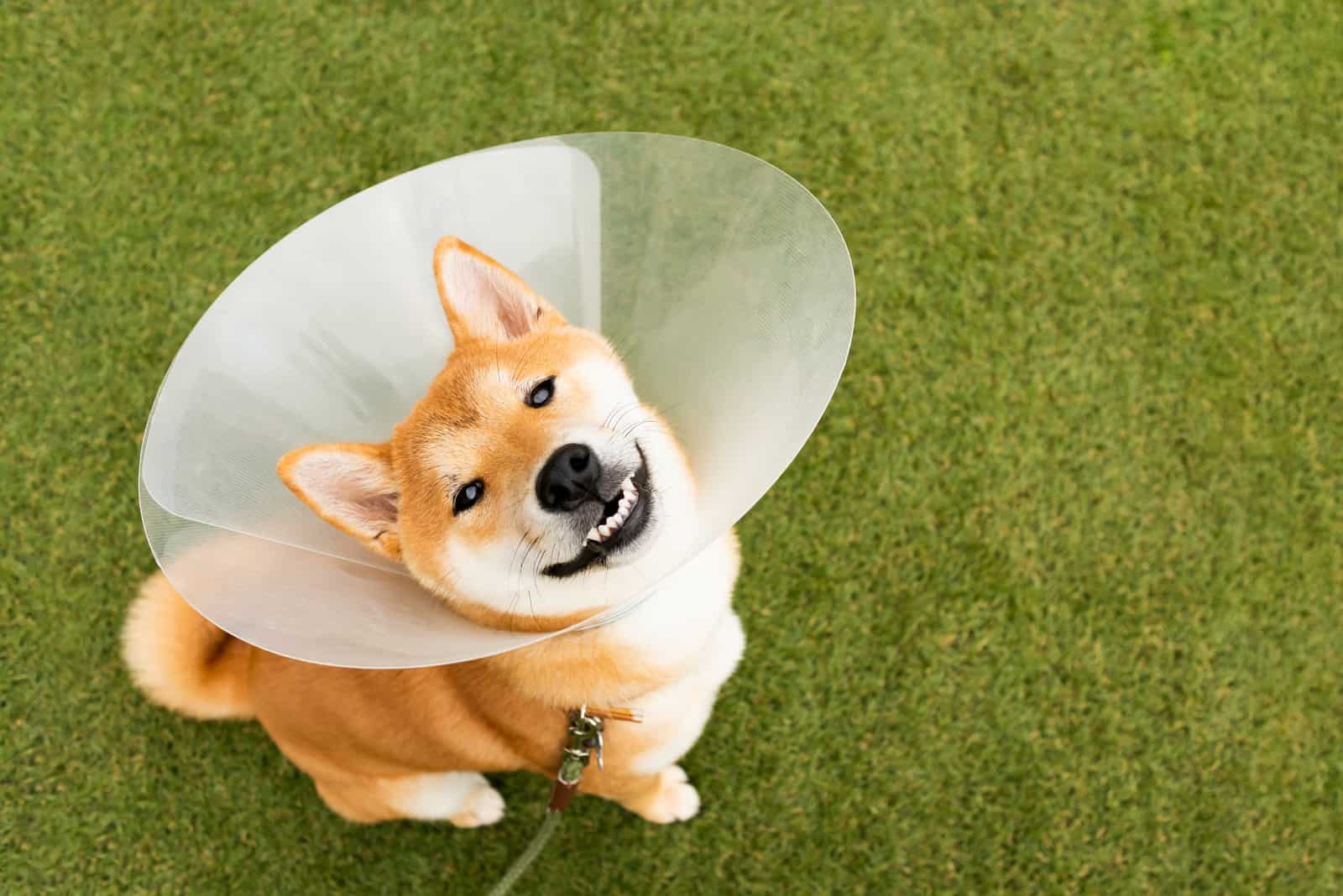One of the procedures that you, as a responsible dog owner, should set up is neuter surgery, also called castration. Whatever dog breed you have, it is important to appoint your dog to this surgical procedure for numerous reasons.
Some of those reasons are no accidental litters. Male dogs tend to get less dominant after the procedure, and it also lowers their sexual drive.
But, after the process of spaying/neutering, the most important thing is the healing process of your pooch.
Even though your puppy might look cute with a plastic cone on, and they might even look like cute little lamps, your dog doesn’t find this experience pleasing. As pet parents, we want to do everything for our dog to make sure they feel comfortable.
When it comes to the healing process, the most common question you may ask yourself is, When to take cone off dog after neuter or spay surgery? In this article, we will help you with that answer, and also help you make your pet as comfortable as possible while wearing the cone.
How Long Should A Dog Wear Cone After Being Neutered?
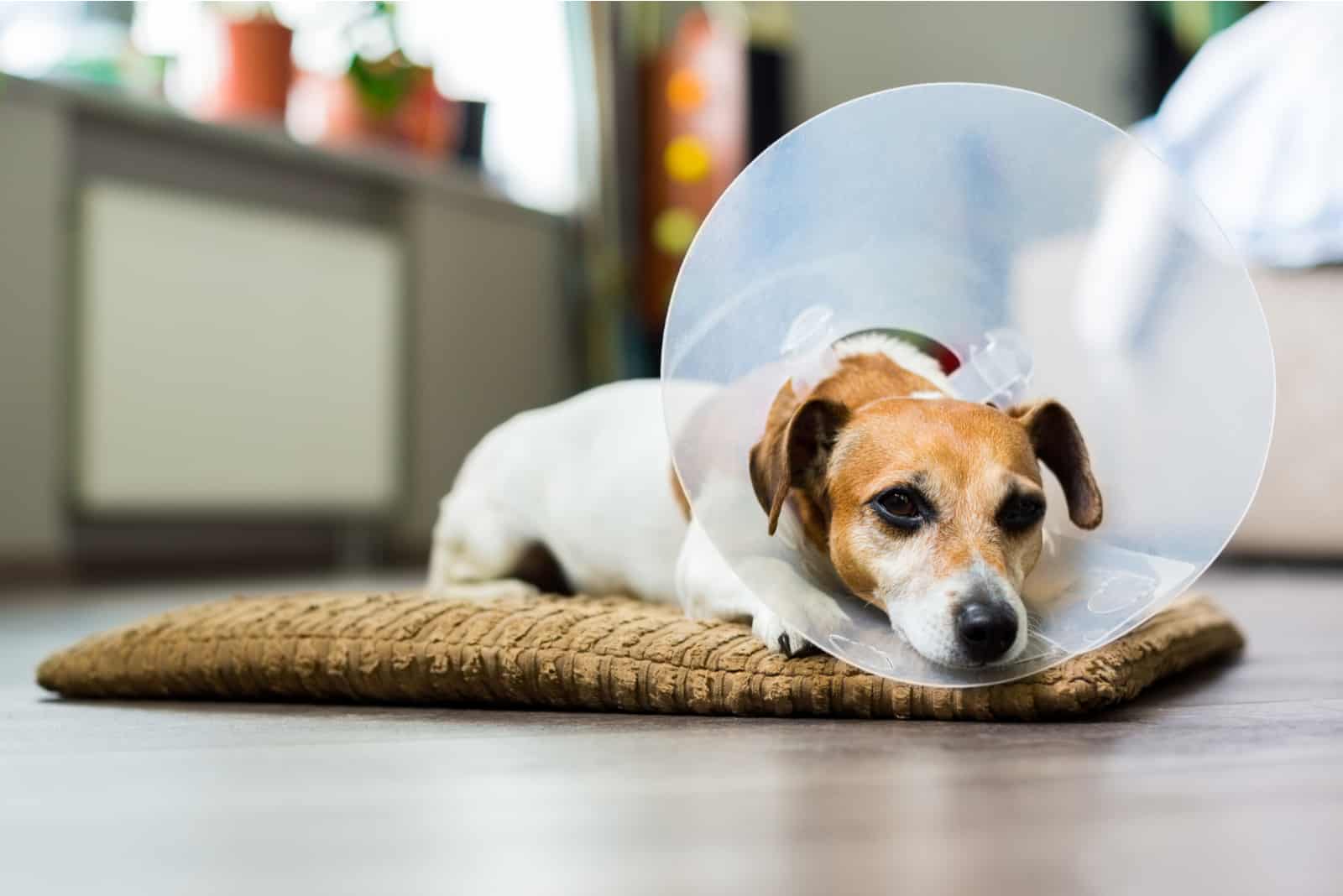
“When to take cone off dog after neuter?” is the main question when it comes to the aftercare of this procedure. The period of time your dog should wear the cone is approximately 10 to 14 days, and it is the same for both female dogs and male dogs. Some dogs may wear it a bit shorter, for example, for seven days, while others may prolong their wearing time to more than 14 days.
Whether it is 7, 10, 14, or more days, you should always check with the vet. If you see that your dog is healing nicely and quickly, also call the vet and make an appointment just to be sure that everything is good and ready for normal function.
Reasons That Might Prolong The Cone Wearing Time
The dog is the safest on the surgery site and after in the vet care, after that, you are the one that needs to take good care of it. Which we are sure you will, especially with the help we will provide you.
As we said, the days of your dog wearing a cone can vary. The longest is usually 14 days, but sometimes it can be even longer. What can this depend on? Well, sometimes it is just the nature of your dog’s healing process. Some dogs’ skin takes longer to heal.
Other reasons might just be you. Don’t worry – it’s nothing too serious, and you shouldn’t blame yourself. It is mostly because of the goodness of your heart and wanting to make your dog as comfortable as possible.
By wanting to take the thing off your dog’s neck as soon as possible, or taking it off from time to time while the dog is healing, you just might make the necessary wearing time even longer.
We made a list of things that you should avoid or keep a closer eye on when your dog is still in its recovery time.
No Intense Exercise
Even though your dog might not feel like running around in the first few to seven days, make sure to always keep an eye on him. After seven days, they gain more strength, and also get a bit bored so playtime might kick in.
Always have a leash on your dog even if your dog knows how to behave without one. If they meet other dogs, make sure they only greet each other by sniffing and not running or jumping. Avoid playing fetch or pulling a rope or anything of that kind.
Any type of exercise might make the stitches rip, and that may cause your dog pain and also prolong the healing process.
Long Or Short Walks
Long walks do belong to the exercise part, but we wanted to separate walks, whether long or short, because some dog owners don’t think of them as tiring for dogs with cones.
Your dog will have to go to ˝the bathroom˝, which requires taking them for a short walk just around the house for as long as they need to relieve themselves. Taking a dog for a walk can be tricky, so we tried to make it a bit easier.
You shouldn’t pull your dog along, but try to walk towards him. This way, you won’t trip on the leash, and your dog will feel encouraged to walk in front of you and hold his head up. Keeping your dog’s head up is important, so they don’t drag the cone on the ground, which can cause them discomfort and pain.
Use a longer leash and treats as motivators for them. Besides discomfort, long walks can also cause the stitches to break.
Bath Time
Bath time or showering is a big “no” while your dog is still healing. The most important thing is to keep the incision site safe and secure, which is the main reason why your dog is wearing a cone.
While bathing, there is no safe way to secure the incision from getting wet, so it’s best to avoid it. If your dog somehow gets dirty, either use wet wipes with no fragrance or dry dog shampoo. It is better to wait 14 or less than to cause complications for your dog.
If the incision gets wet, it can get irritated and itch or hurt your dog, which will make them super uncomfortable. Besides that, the threads can melt or break, which will make the wound open and expose it to various infections.
Not Wearing The Cone Enough
As we already told you, it is no secret that your dog probably doesn’t enjoy wearing the cone. Dogs don’t understand that they can’t mess with their wound, and that the cone is a good thing and not a thing that is purposely put on him to annoy him or make him uncomfortable.
It prevents him from licking and biting the incision site, which makes it a necessity. Don’t take the cone off except when the dog is eating. If you take it off thinking you are making your dog comfortable, you are actually doing it more harm than good.
Stick to the time your vet has suggested, so you don’t accidentally make it longer than it has to be.
Dog Needs To Be Monitored
As the time passes, the stitches will start to itch him. Because of this, dogs get really frustrated and unsettled. You need to try and ease the process. The thing you can do is try to pet him around the wound as carefully as possible.
This is one of the reasons why you should keep the dog’s cone on until the wound is healed all the way through. Besides this, the wound can sometimes get infected imperceptibly to you, so it is important to monitor your dog’s behavior.
If the stitches get infected and you don’t notice it in the dog’s behavior, it can cause some serious damage to the rest of the healing process.
Taking The Cone Off For Sleep Time
When do you take the cone off of your dog after neutering? The answer is wait until after 10 to 14 days have passed. The most important time for your dog to wear the cone is during his sleep time.
This can be dangerous, even though you might think you are doing your dog a favor. A dog’s sleep is never firm enough for them not to wake up during the night, especially if they have some unpleasantness that is bothering them.
As already mentioned, itching can be the thing that will make them rip out all the stitches and open the wound, which will for sure get infected and cause them even more problems.
Even if it isn’t itchy, dogs have the natural instinct to lick a wound they have. Well, this is very bad for this type of wound because the stitches can come off, and the wound can get irritated and itchy. So, we suggest leaving the cone on all through the time that was suggested by the vet.
Checking The Incision Too Little
The incision can get infected during the day even if you are doing everything right. Dogs laying around in places that might not be the cleanest can cause the incision to get infected.
You should check the incision at least two times a day, preferably in the morning and at night before bedtime. But, a couple of times a day can be the better thing to do.
Dogs will usually show you by their behavior that there is something wrong, but the sooner you detect an infection, the sooner you can take your dog to the vet.
Not Going To The Vet
If something feels odd about the surgical site, you should call your vet and make an appointment. Some symptoms that the surgical site shouldn’t have are a strong and bad smell, abnormal swelling, or discharge, especially with a greenish color.
This surgical procedure can cause some soreness, but that shouldn’t be painful for your dog. If you see your dog in distress and even a bit aggressive, or whimpering and crying a lot, you should probably call the vet.
When it comes to whimpering and crying, first, make sure that this isn’t a way of protesting to take the cone off. But, if you are not sure, it is better to call the vet than to guess and accidentally let your dog go through pain.
Excessive Dog Food And Water
Your dog’s appetite is going to be compromised a bit, especially for the first couple of days because of the anesthesia and all the medications that your dog might be taking.
It is important not to give them too much water or dog food in the first few days. The main reason is that they might start to vomit, which is really tiring for the dog. Of course, if you see this lasting for four days or more, contact the vet because your dog will probably need an IV.
The vomiting causes the dog to exert, which can cause their incision to open, which could lead to numerous problems for your dog.
Giving Them Human Medication
We believe that every dog owner loves their dogs tremendously, and they will do anything to make them feel better. Giving them human medication isn’t only damaging to your puppy, but can also be fatal.
The only medications you should use are the ones that are prescribed by your vet. If you think that the medication given to your dog isn’t helping for some reason, contact the vet and ask for something new – just don’t do it by yourself.
When To Take Dog’s Cone Off After Spay/Neuter Procedure: Things To Keep An Eye On
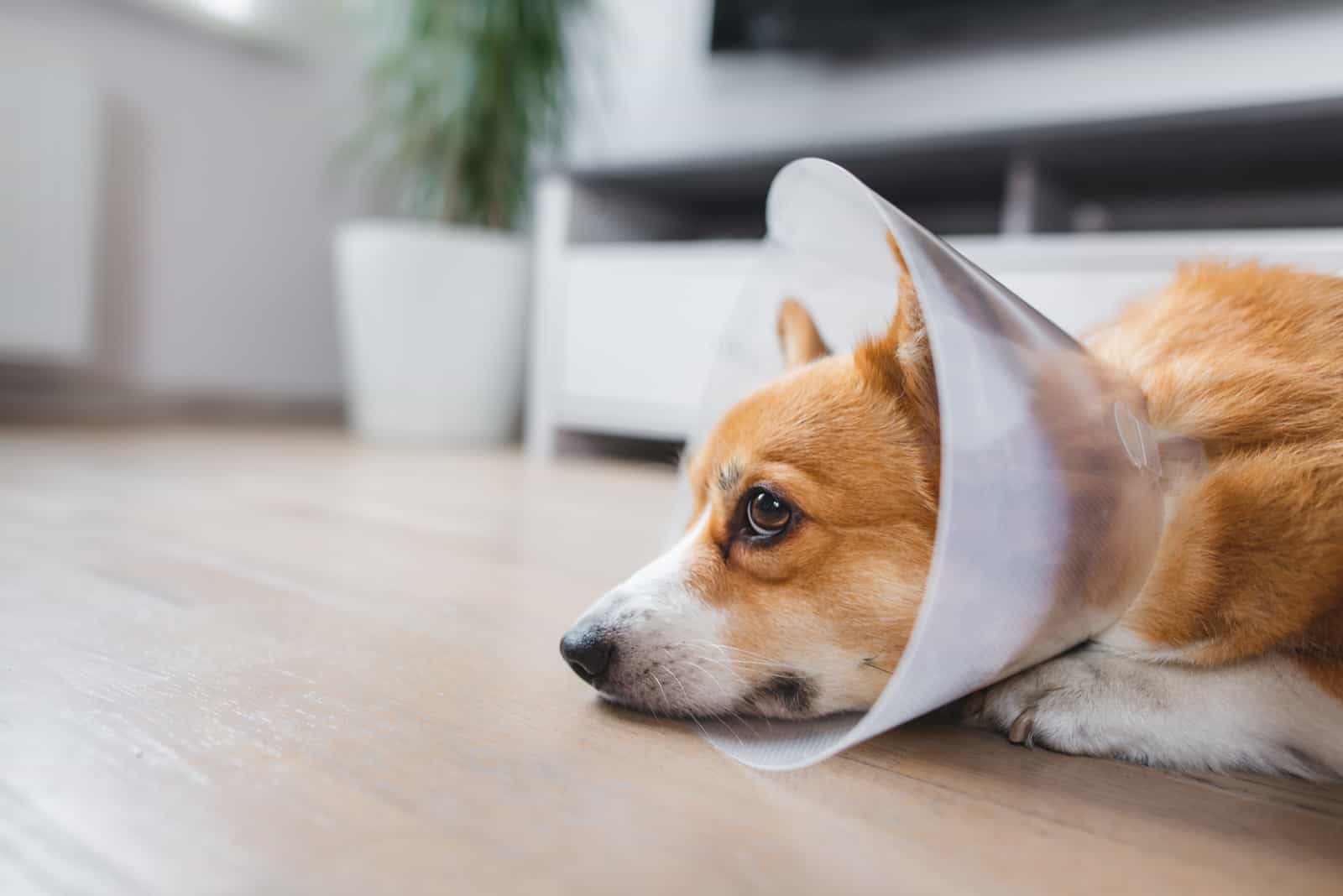
When you look at your precious dog with a cone around its neck, you can’t help but think to yourself, ”When can I get my dog out of this misery?” For the majority of the time, dogs look really uncomfortable when wearing a cone, and this is why we ask ourselves when we can take the cone off our dog after neutering.
Besides seeing them uncomfortable, you can’t do the things you mainly did with your pet. Well, we have a disclaimer – yes, your dog might be a bit uncomfortable and feel strange with something being around its neck, but they can do everything perfectly fine with the cone on.
Pet owners usually make the mistake of taking the cone off too soon because they feel their dog can’t handle it and can’t live its life normally, but that is far from the truth. Everything from sleeping to taking a walk, going to pee or poop, and eating can be done normally.
If you want to make their life a bit easier, you can take the cone off during their mealtime. But, after the meal, put it right back on.
How To Make Your Dog Feel Comfortable After Neutering Or Spaying
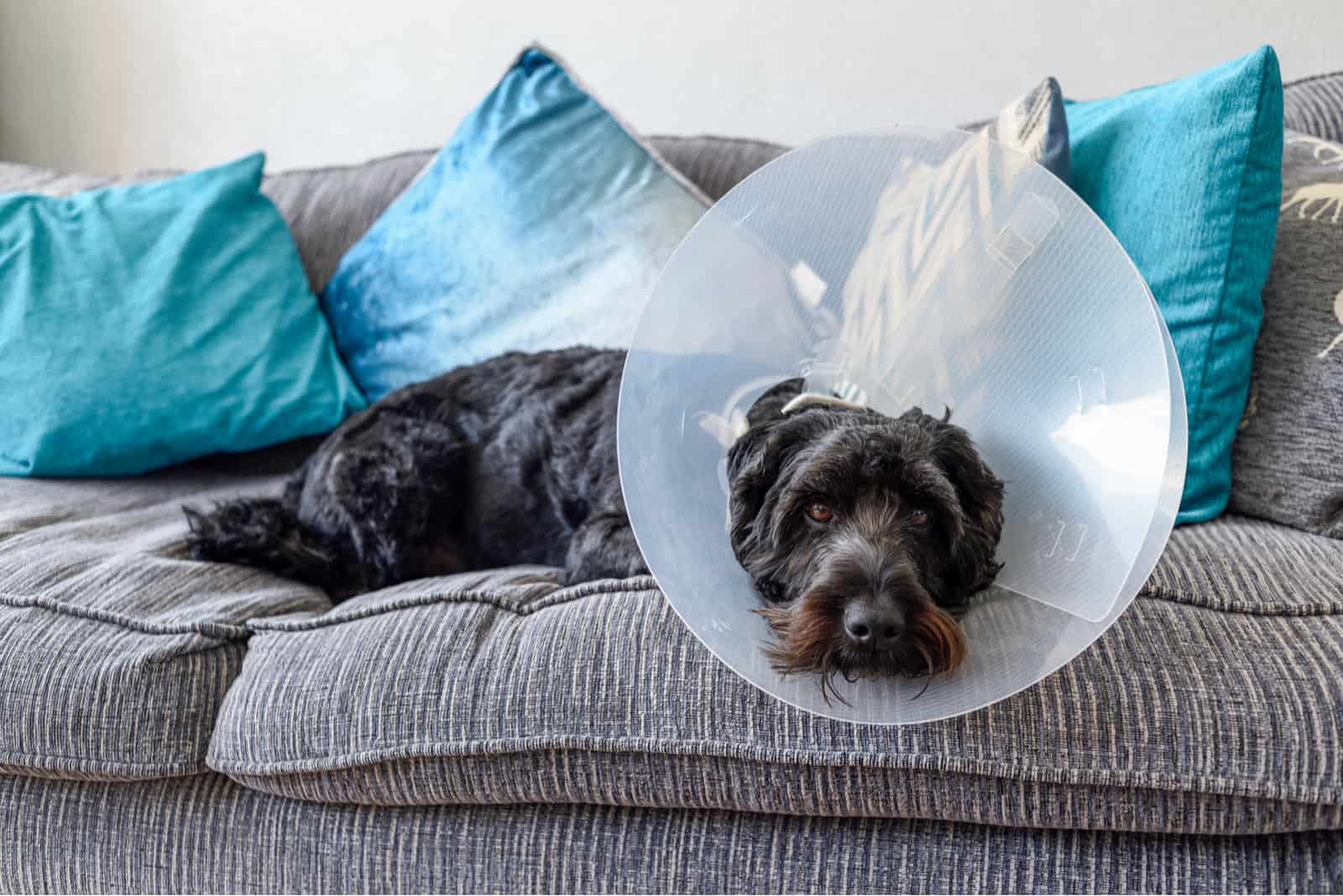
We mentioned the things you might do wrong just because you want to make sure your dog is not in any distress or discomfort. But, don’t worry – there are still some things you can do to make your dog’s healing journey as comfortable as possible.
– Give your dog some extra care. Sometimes, they can get depressed, which most of us sometimes forget because we think that depression is only connected to we humans. Extra snuggle time is the best thing you can do for your dog.
– If your dog usually sleeps in a kennel, we advise you to postpone this until your dog gets better. Sleeping in a kennel with a cone around its neck can be extremely uncomfortable. The best thing to do for your dog that is in distress is to give it a soft and quiet spot in the house where it can get its dog sleep as much as it needs.
– Sometimes trimming the cone can be beneficial for your dog’s comfort. Try not to trim it down too much because that will defeat the purpose of the cone.
– Itch them on the neck where the cone is placed. It can ease the struggle of wearing it, and it can also calm them down a bit and help them go to sleep.
– If you have the strength, carrying your dog might be a great option. Sometimes, your dog might be struggling, and being carried will definitely help them through it. And, the plus side is that they will appreciate the attention.
What Are Some Alternatives For Plastic Dog Cones
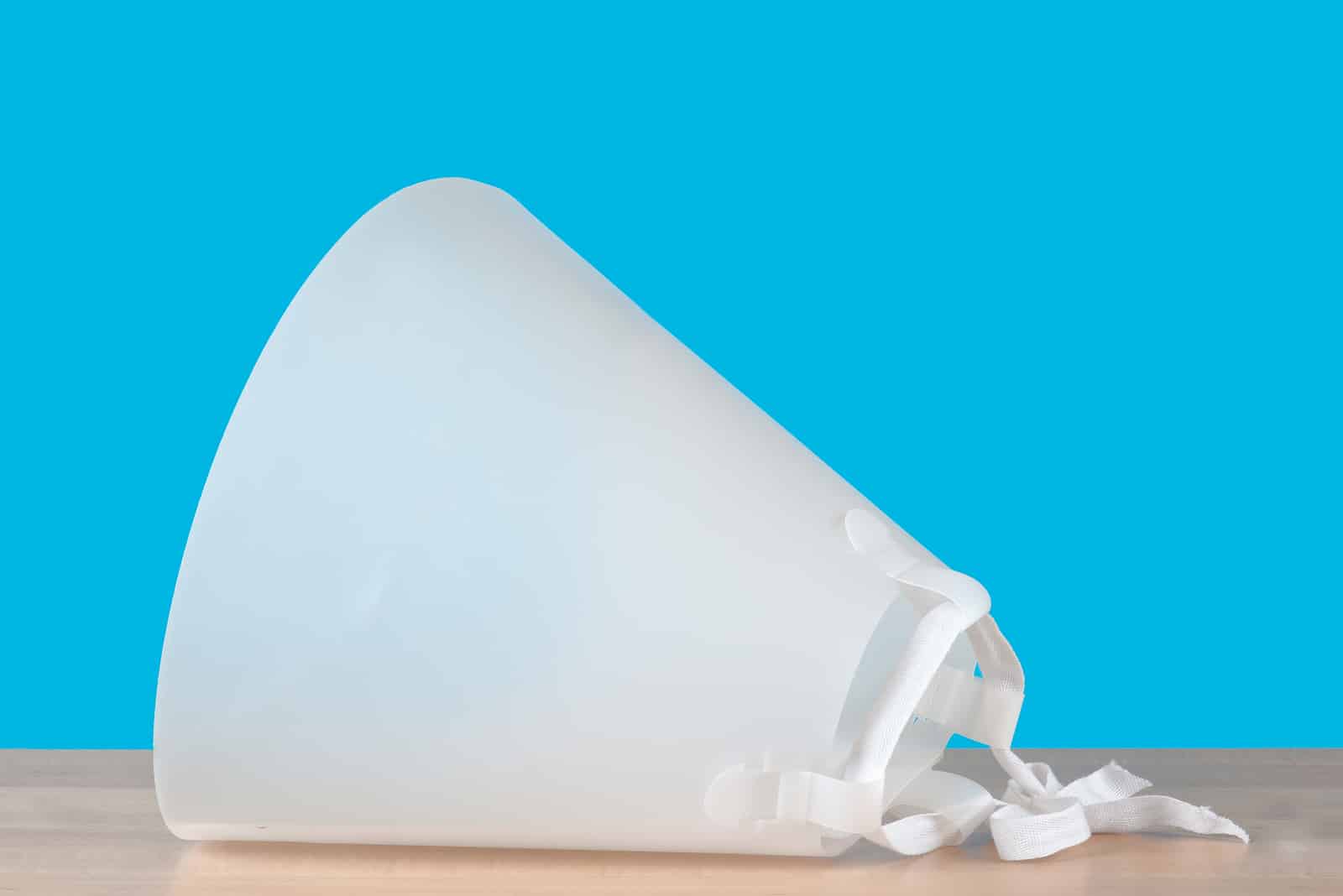
Dogs usually get prescribed an e-collar or an Elizabethan collar post-surgery. Some of them get really scared of it – some play with it – while others can get angry and aggravated and want to take it off.
These are mostly called the cone of shame since a lot of dogs tend to hide from others while having it on. But, there are some more comfortable options that your dog might enjoy a bit more.
Before buying any of these options, make sure the vet approves of it. They all have the same role – to protect the incision site, but sometimes not every type of collar will suit every dog.
All of these can be found on Amazon.
Neck Collars
These are similar to cervical neck braces that a human might wear when needed. They are easier to put on because you just wrap them around the neck and adjust the tightness.
They are softer, smaller, and more comfortable than traditional collars. So, if you see your dog struggling with a regular collar, this might be a good alternative.
Inflatable Collars
An inflatable collar looks a lot like the inflatable pillows that humans use to travel. Since they need to be inflated, you can guess that they are much softer than regular collars, which makes them more comfortable.
Besides being more comfortable, these collars are also less destructive. This means that they don’t take up too much space, so the dog has more vision, and will less likely be hitting stuff around them, like lamps or tables.
These inflatable collars are better for bigger dogs since they tend to destroy the plastic ones. They are also much harder to destroy.
Soft Collars
These collars are made out of fabric that is, told by the name, softer and more comfortable for dogs. These are best suited for bedtime because of their comfort. Another reason why this collar is more for when the dog is sleeping is that they can’t see through them, which makes it harder for them to move around.
These collars also come in cute designs and various colors, which will make your dog look even cuter.
Surgical Recovery Suit
These are made for dogs that just can’t stand anything being around their neck. It is a large piece of fabric that covers a bigger portion of the dog’s body.
You can buy these, but you can also make them at home by using a T-shirt. You first cut it in half, then cut four holes for your dog’s legs. After that, you make ties on either side of the shirt. This is to secure the suit when you put it on your dog.
Try to find a shirt that is big enough to cover the incision. This might be the best option when it comes to the comfort of your dog since it doesn’t restrain them in any way, and it is easy to move in it.
FAQs
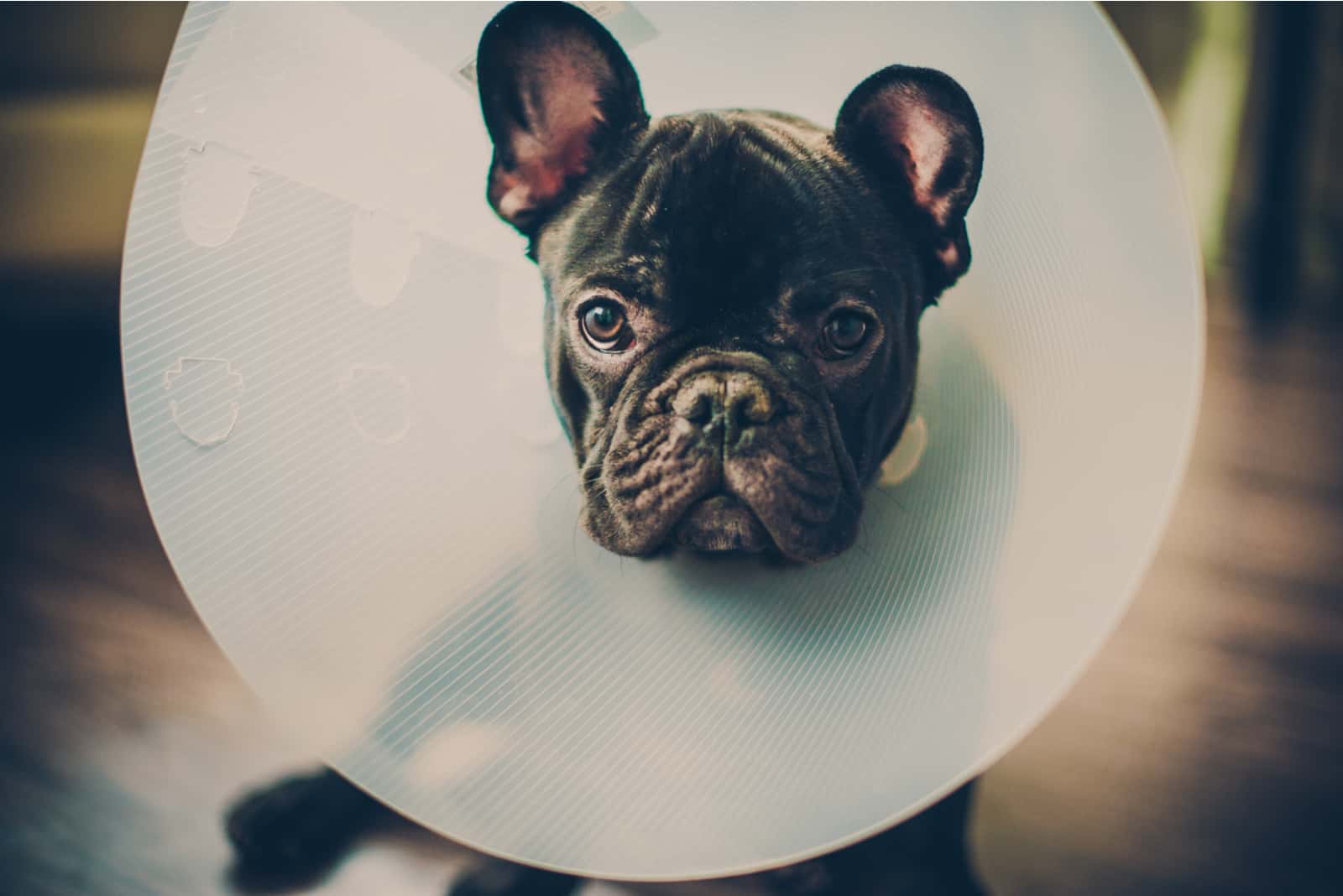
What Is Neutering?
The shortest way to define neutering is the removal of a male dog’s reproductive organs. When it comes to male dogs, the testicles are either removed partially or all the way, which is called castration.
When it comes to female dogs, it is called spaying, and it is a procedure where the vet removes their ovaries or both the uterus and the ovaries.
Should Your Puppy Be Vaccinated Before Being Neutered?
Vaccinations are a big plus when it comes to neutering. Vets prefer to neuter dogs that have gotten all the vaccinations that they need. Dogs that aren’t vaccinated are prone to infections.
What Is The Best Age For A Dog To Be Neutered?
Since every dog owner knows his pet best, he will easily notice the signs that his dog needs to be neutered. However, there are certain pieces of advice at which age it is best to neuter a dog.
For male puppies, it is best to wait until they turn anywhere from six to 12 months old. When it comes to small breeds, six months isn’t considered too young, but we suggest you wait a bit longer than that. For bigger breeds, you should wait until they turn nine to 18 months old.
When it comes to females, you should wait until they turn six months old or more. The best time is around 12 months, but you need to be careful if your dog is in heat. When they are in heat, the procedure gets risky, so make sure you tell your vet if you assume that your dog is in heat.
In Conclusion
As we mentioned, the procedure of neutering is a must for every dog. After the procedure, the main thing is to make your dog’s healing process as comfortable as possible.
The main thing your dog will need is a collar. You can pick from various options that are out there. When to take cone off of dog after neuter is the main question that pet owners ask themselves, and we hope we have helped you answer the question in this article.
We wish your pet a quick recovery, and for both of you to go through this as easily as possible. Don’t worry – everyone gets stressed, and we believe that you are doing everything that is in your power to help your dog get through this process.
